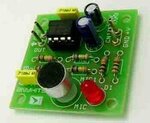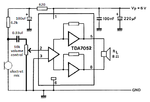foxbrain
Full Member level 2
i need a circuit that takes my voice (via microphone) and hear it by speaker for now.... and later i want to convert my voice to digital..
for the first step i connected a circuit as in the TDA7052 datasheet but i didn't hear anything and on the oscilloscope i just saw a small noise signal.
i added an op-amp amplifier to it but same results!!!
So how can i solve this problem...
Thanks
for the first step i connected a circuit as in the TDA7052 datasheet but i didn't hear anything and on the oscilloscope i just saw a small noise signal.
i added an op-amp amplifier to it but same results!!!
So how can i solve this problem...
Thanks

